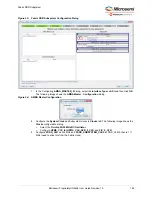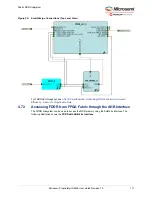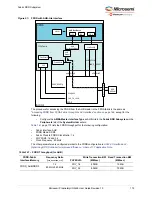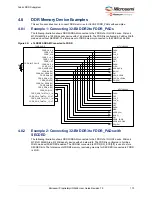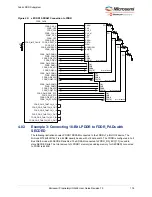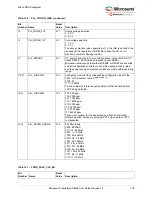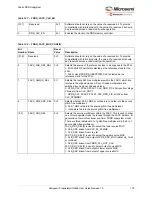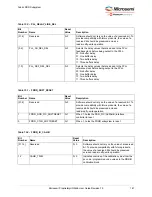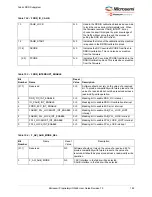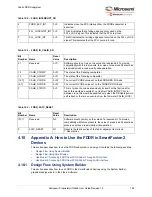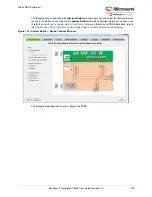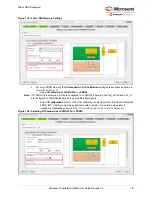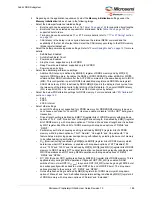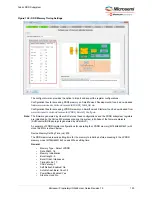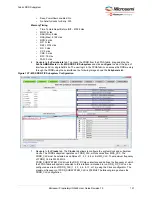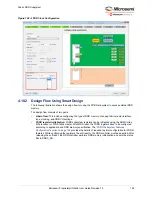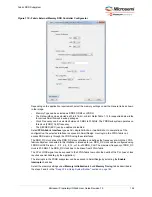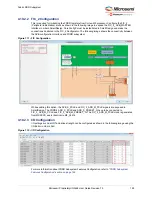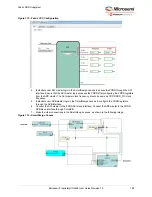
Fabric DDR Subsystem
Microsemi ProprietaryUG0446 User Guide Revision 7.0
183
Table 155 •
PHY_SELF_REF_EN
Bit
Number
Name
Reset
Value
Description
[31:1]
Reserved
0×0
Software should not rely on the value of a reserved bit. To
provide compatibility with future products, the value of a
reserved bit should be preserved across a read-modify-write
operation.
0
PHY_SELF_REF_EN
0×0
If 1, automatic calibration lock is enabled.
Table 156 •
FDDR_FAB_PLL_CLK_SR
Bit
Number
Name
Reset
Value
Description
[31:1]
Reserved
0×0
Software should not rely on the value of a reserved bit. To
provide compatibility with future products, the value of a
reserved bit should be preserved across a
read-modify-write operation.
0
FAB_PLL_LOCK
0×0
Indicates the lock status of the Fabric PLL.
Table 157 •
FDDR_FPLL_CLK_SR
Bit
Number
Name
Reset
Value
Description
[31:1]
Reserved
0×0
Software should not rely on the value of a reserved bit. To
provide compatibility with future products, the value of a
reserved bit should be preserved across a
read-modify-write operation.
0
FPLL_LOCK
0×0
Indicates the lock status of the FPLL (PLL in FDDR).
Table 158 •
FDDR_INTERRUPT_SR
Bit
Number
Name
Reset
Value
Description
[31:5]
Reserved
0×0
Software should not rely on the value of a reserved bit. To provide
compatibility with future products, the value of a reserved bit should be
preserved across a read-modify-write operation.
4
DDR_FIC_INT
0×0
Indicates interrupt from DDR_FIC.
3
IO_CALIB_INT
0×0
The interrupt is generated when the calibration is finished.
For the calibration after reset, this typically would be followed by
locking the codes directly. For in-between runs during functional
operation of DDR, the assertion of an interrupt does not guarantee
lock because the state machine would wait for the ideal time (DRAM
self refresh) for locking. This can be used by firmware to insert the
ideal time and provides an indication that locked codes are available.

